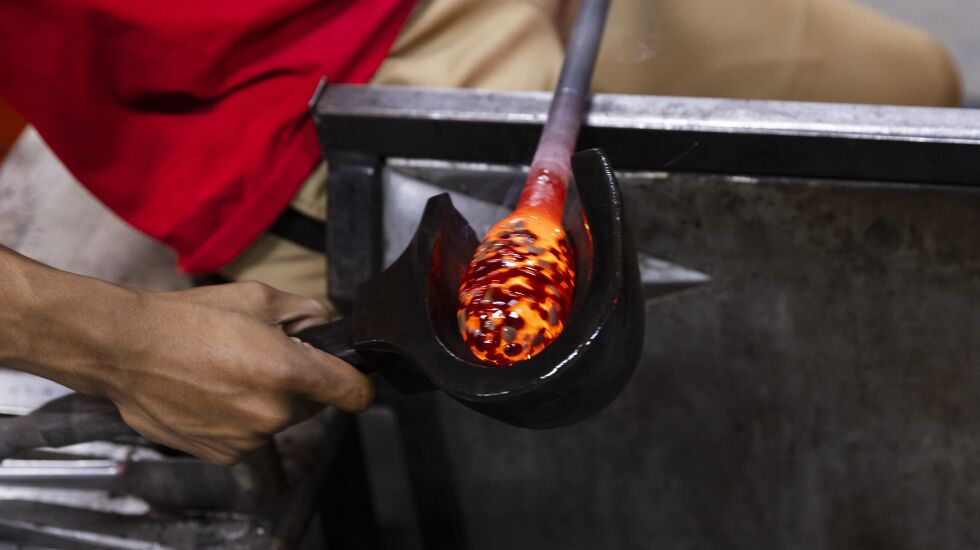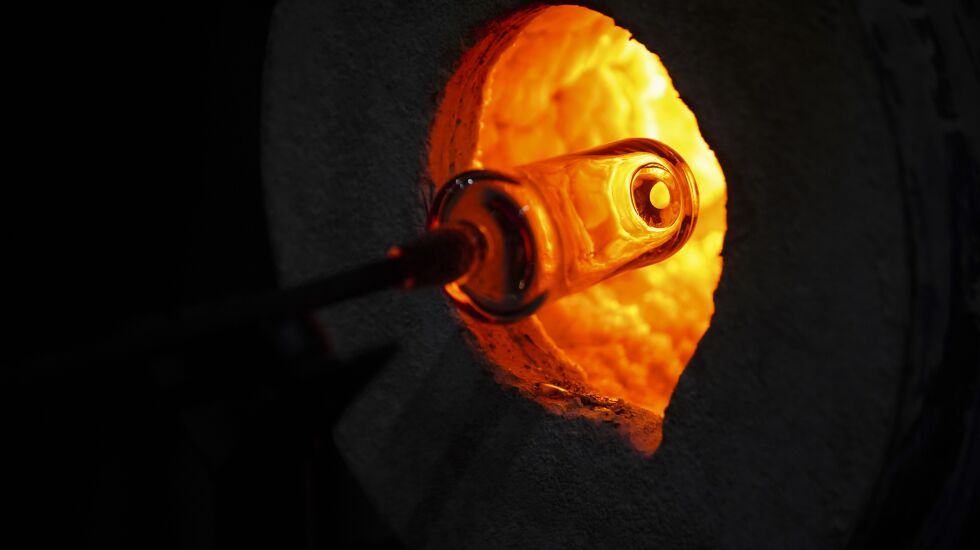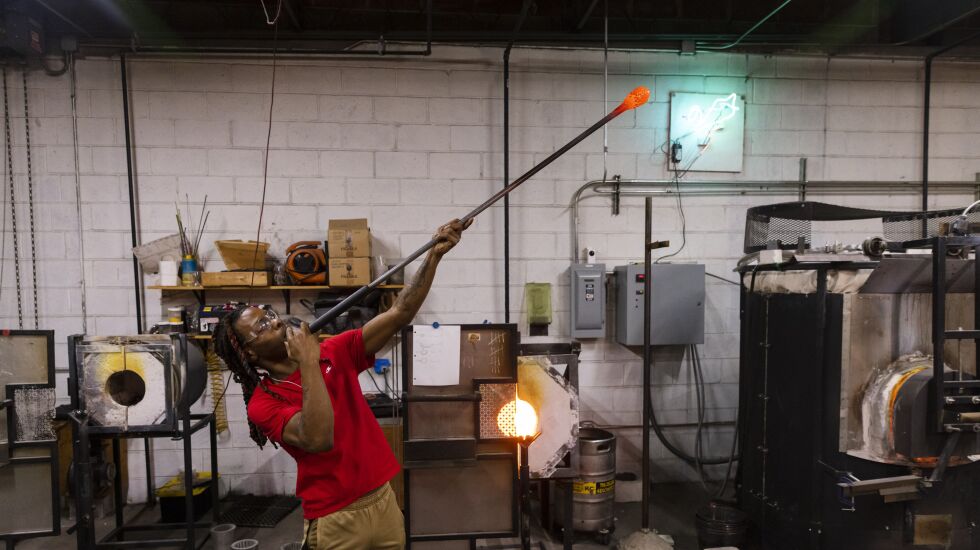
Handling molten glass requires razor-like focus — and that’s one of its benefits, said N’Kosi Barber, a veteran glassblower.
He runs a program at Firebird Community Arts, a West Side glass and ceramics studio, teaching glassblowing to youth impacted by violence.
The attention to detail that glassblowing demands is key to helping them heal.
“Everything else going on in your life gets put on pause,” said Barber, 29.
They also can make a little money.
On Saturday, the work of the program’s current participants, along with that of other artists, will go on sale at an annual holiday market, open from noon to 5 p.m. at the East Garfield Park studio, 2651 W. Lake St.
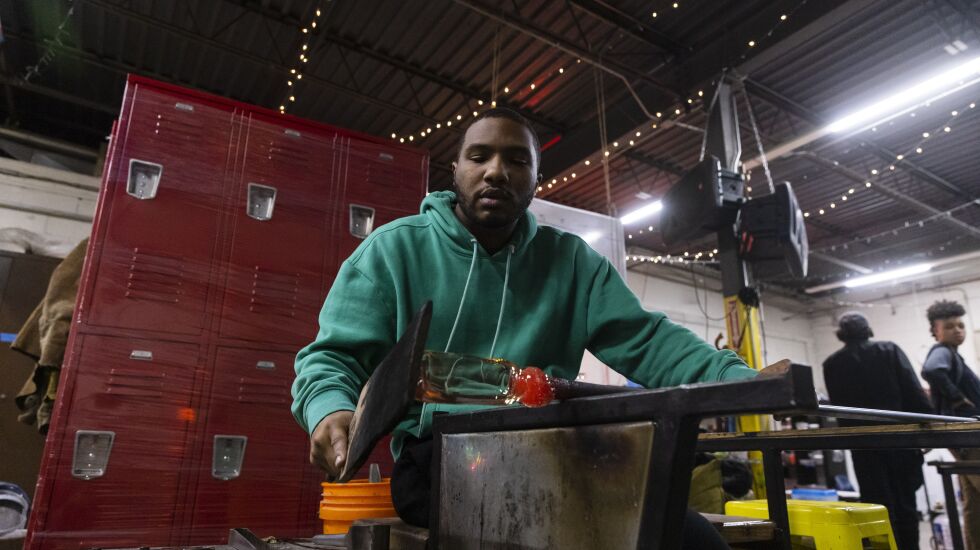
Works range in price from $20 to $200, with proceeds going to the artists. Admission is free, though for $75, visitors can take a glassblowing lesson and make their own holiday ornament.
Barber took up glassblowing after seeing it as a student at Little Black Pearl Art & Design Academy in Kenwood. An instructor drew the molten glass out of a vat with a pipe and it spilled on the floor — “like it was honey” he recalled.
The South Side native was later hired in 2015 by the Firebird to lead Project Fire, their program for youth recovering from violence.
Participants usually find the program through trauma specialists at Stroger Hospital or University of Chicago Medical Center. Many arrive shell-shocked and shy, but the work draws them out, Barber said.

“People have to engage because it’s a safety risk if you don’t communicate,” he said. “You have to put your trust in somebody.”
Offering youth a safe space to heal is part of the program, said Karen Reyes, Firebird’s longtime executive director. “Our mission is about connecting people through the healing power of glass blowing,” she said.
Reyes started the program after hiring master glassblower Pearl Dick as artistic director in 2014, seeing it as an extension of a quest to provide extracurricular activities for students.

While growing up in Chicago, Reyes moved around the city, attending different schools and noticing the disparity in extracurricular offerings and the impact that a lack of offerings had on students.
“I found protective structures in these undervalued pieces of the educational puzzle,” she said.
The studio’s role in plugging that gap was recently recognized by the Cook County Justice Advisory Council, which awarded them a grant of about $670,000 to continue their work.
It was among bevy of grants totaling $75 million that the county began awarding to anti-violence groups around Chicago this fall, funded by federal coronavirus relief dollars.
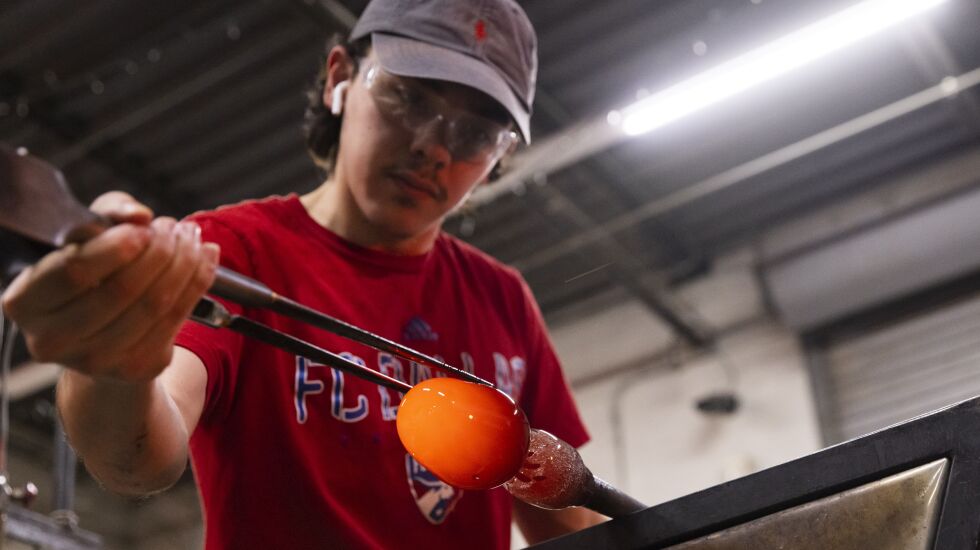
“Healing from the trauma caused by a gunshot wound is vital to a person’s future safety and success. Firebird’s unique and impactful approach to violence prevention is centered on healing,” Avik Das, executive director of the council, was quoted as saying in a statement to the Sun-Times.
“We must offer our young people these opportunities to heal and chart paths to success.”
For Dantrell Blake, the program opened a door he never knew was there before. The South Side native was connected with the program through a trauma specialist after being shot in the leg in 2015 in Back of the Yards.
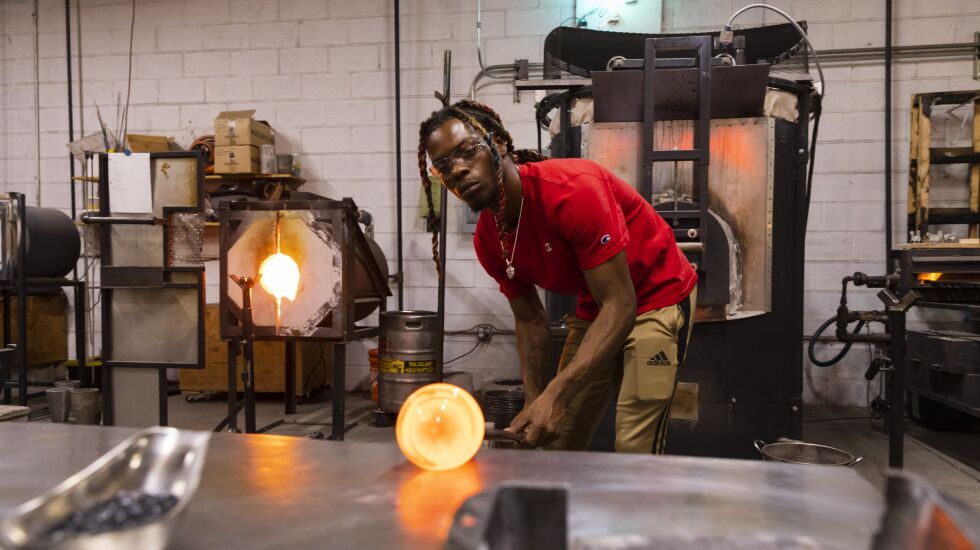
It helped him overcome that and a house fire in which he lost his sister.
Seven years in, Blake, 26, now helps teach the class. He’s become adept enough at glassblowing to be able to sculpt items including a Chicago Bulls head. But he said what matters most is the community that comes out of it.
“It’s more than a program, it’s a family,” he said. “You may come in and might not even want to blow glass, but someone will be there to check in with you.”
Michael Loria is a staff reporter at the Chicago Sun-Times via Report for America, a not-for-profit journalism program that aims to bolster the paper’s coverage of communities on the South Side and West Side.
